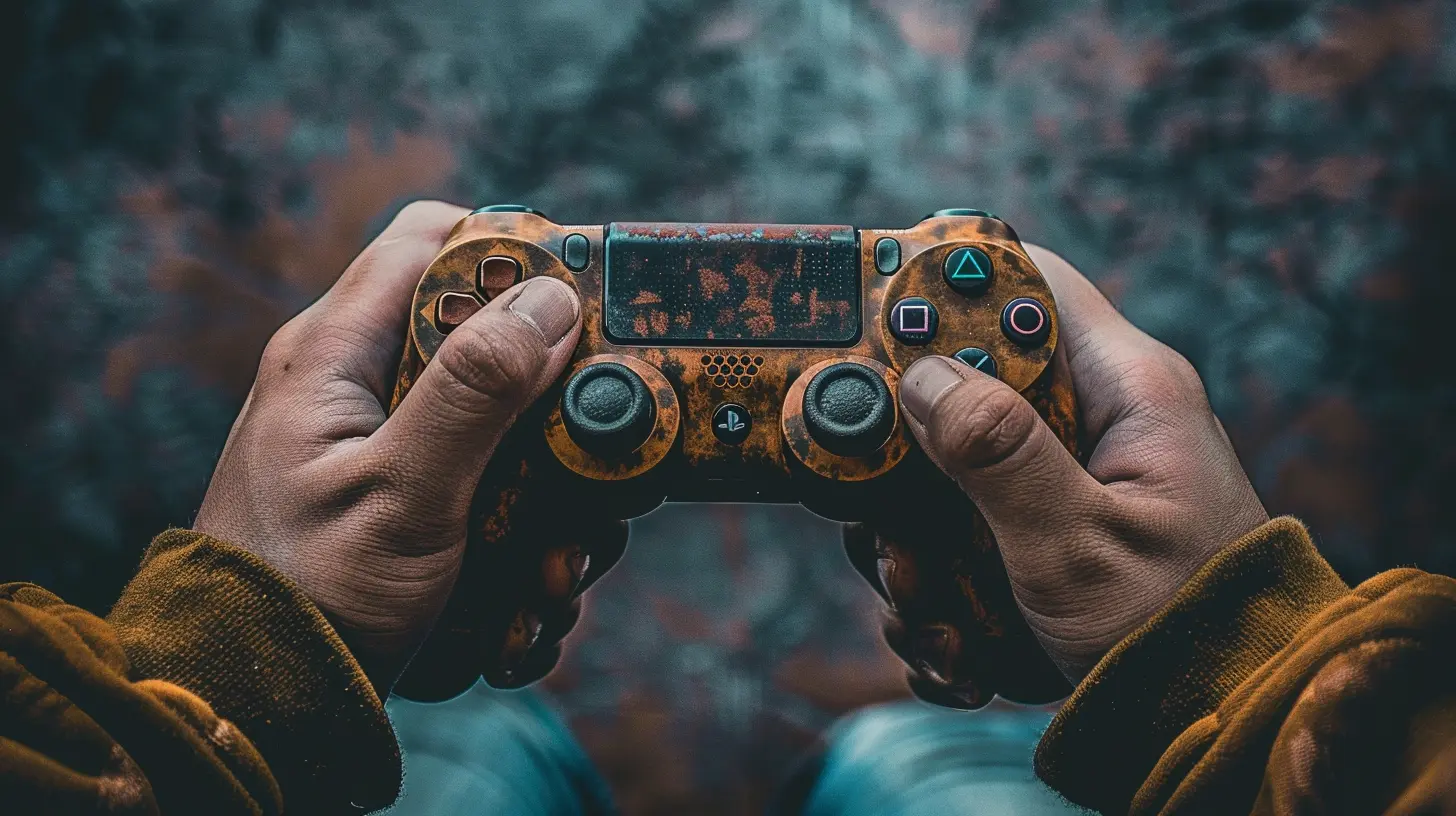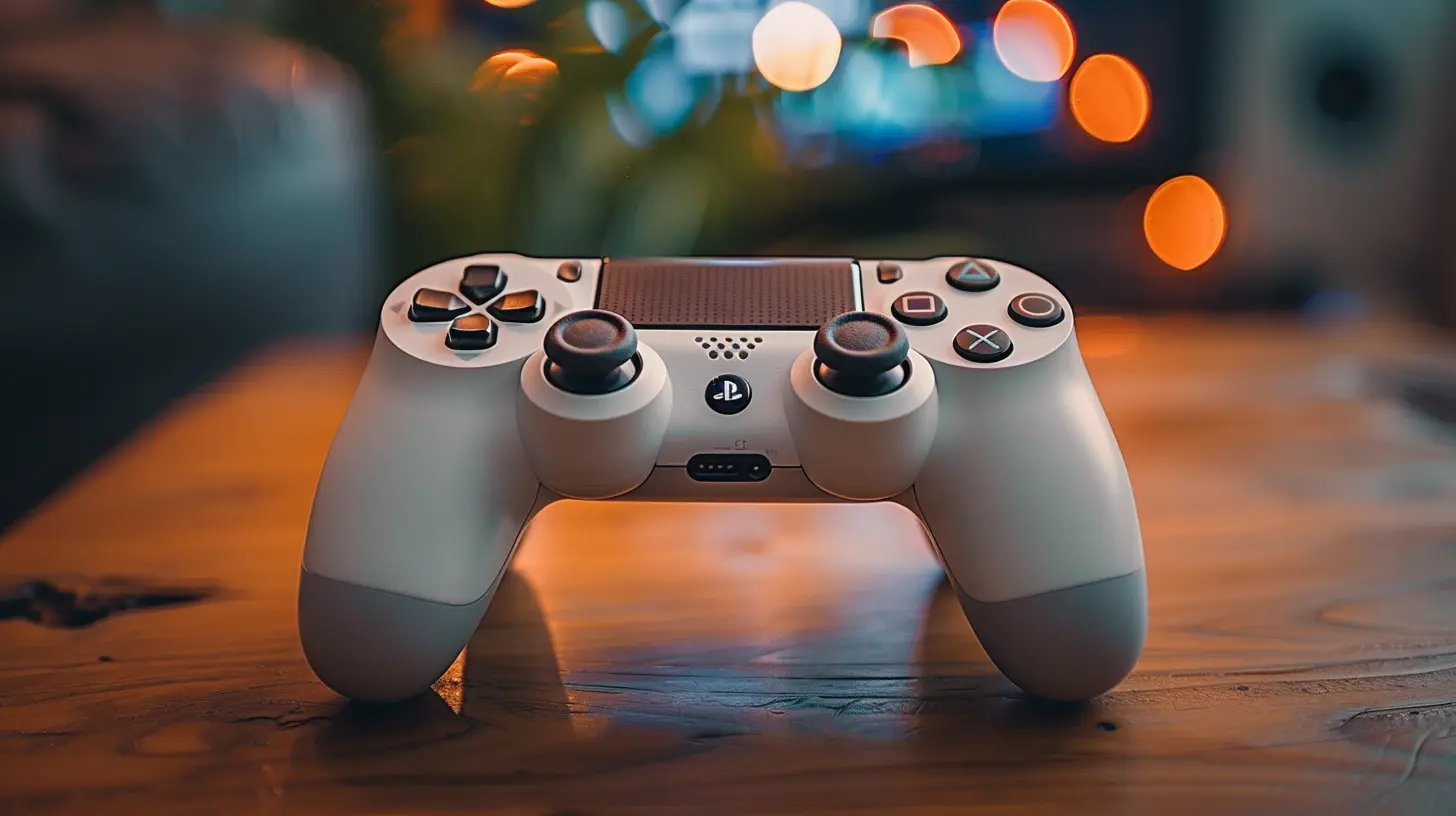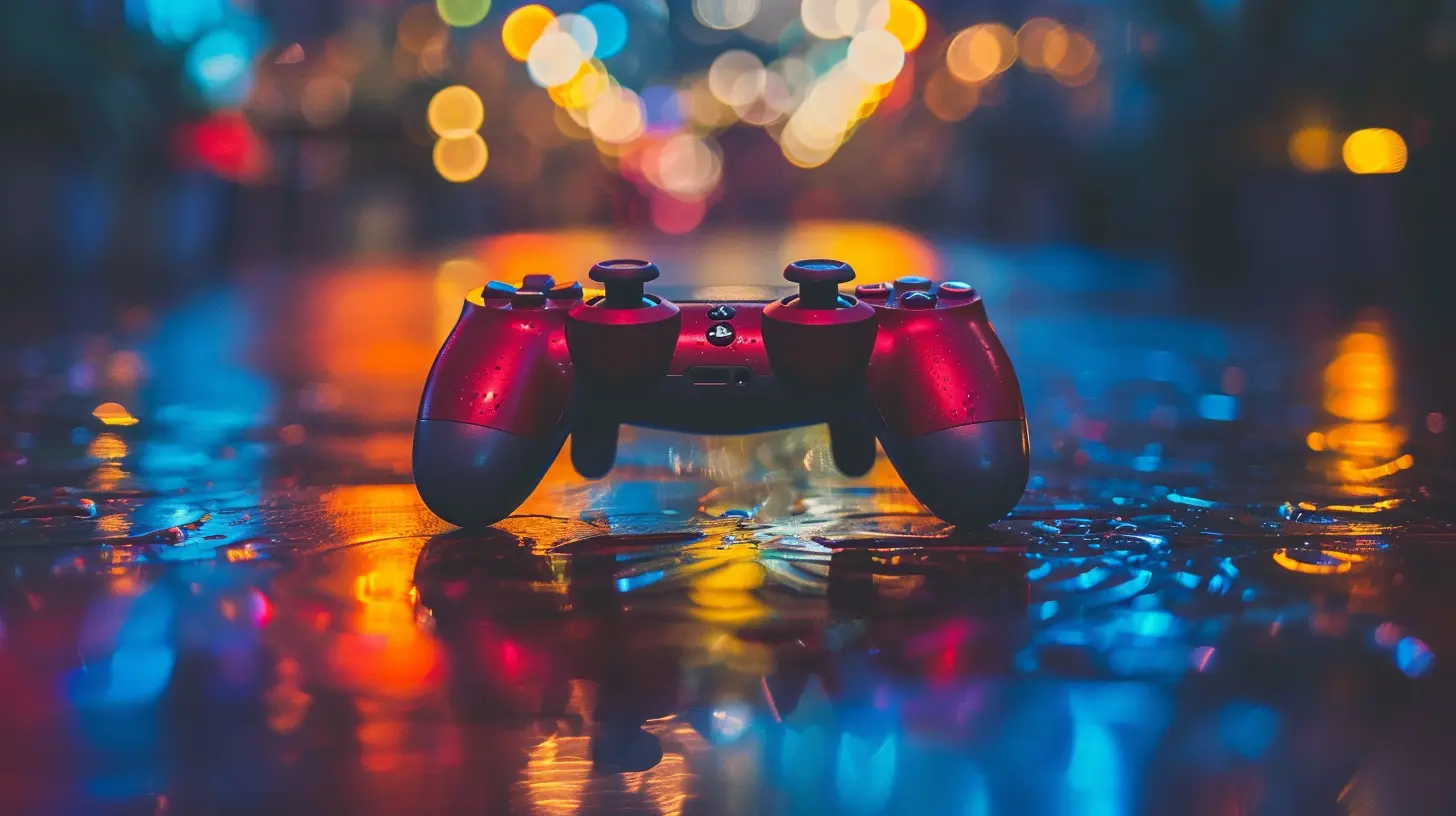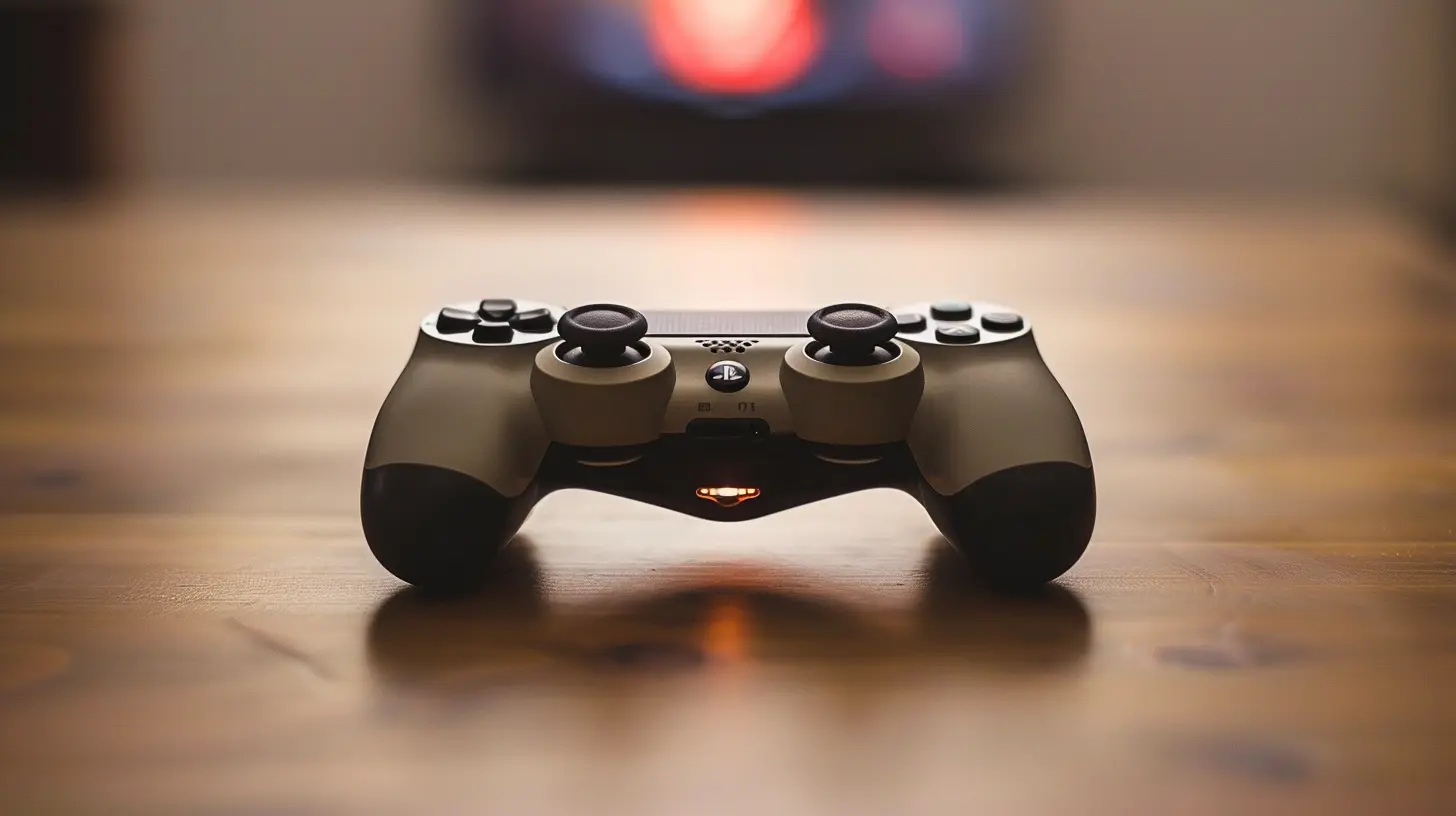How Controller Sensitivity Impacts Your Game
1 September 2025
Have you ever fired off a shot in a game, only for your aim to zip across the screen like a squirrel on energy drinks? Yeah—blame controller sensitivity. If you’ve ever felt like something’s just a tad off in your gameplay, there’s a good chance your controller sensitivity settings have something to do with it.
Whether you're new to gaming or a seasoned vet chasing headshots in Warzone, understanding controller sensitivity and how it affects your game is a total game-changer. This guide breaks it all down in plain English. No tech babble, no fluff—just real talk and practical tips.
🎮 What Is Controller Sensitivity Anyway?
Let’s start from the ground up. Controller sensitivity refers to how responsive your character’s movement or camera control is when you move your controller’s analog sticks. It's the setting that decides how fast or slow your character turns, aims, or looks around.In first-person shooters (FPS), higher sensitivity means quicker turns, faster aim—but often at the cost of accuracy. Lower sensitivity gives you more precise control but slower reactions. It’s like choosing between a sports car and a tank. One's zippy, the other's steady.
📌 The Two Types of Sensitivity That Matter Most
Before diving into strategies and tips, it's important you know the two big players in the sensitivity game.1. Look Sensitivity
This is how fast your camera moves when you move the right analog stick. Higher values mean faster movement. Crucial for games like Fortnite, Call of Duty, or Apex Legends.2. Aim Sensitivity (ADS - Aim Down Sights)
This is how fast your crosshair moves while aiming down sights. High ADS sensitivity lets you track fast targets better, but it might make you overshoot if you’re not careful.
🧠 The Science Behind Sensitivity: How It Impacts Your Game
Think of sensitivity as your in-game reflex nerve. If it's too twitchy or too sluggish, everything feels off. Here's how the sensitivity setting changes the core of your gameplay:🔫 Reaction Time & Targeting
High sensitivity gives you a quicker turn radius. You can spin around and catch a flanking enemy faster. But be warned—it’s harder to land precise shots, especially at long range.Lower sensitivity, on the other hand, keeps your aim steady. Perfect for snipers or players who have a more defensive playstyle. The trade-off? Turning around is slower—meaning you could get outmaneuvered.
🎯 Aim Precision
Controller aim is already tricky. Add in high sensitivity and your stick movements become hair triggers. One nudge, and your aim could leap to the moon. That’s why precision players—especially those who value one-shot accuracy—tend to stick to medium or lower sensitivity.🕹️ Muscle Memory Development
Ever wonder why pro players rarely mess with their settings after finding the sweet spot? Muscle memory. Your muscle memory builds based on repetition. Constantly changing sensitivity basically resets your muscle memory every time. Stick to one for a while and see the improvement compound over time.
⚖️ Finding the Sweet Spot: High vs. Low Sensitivity
Let’s weigh the pros and cons so you can figure out what suits your style best.🔼 High Sensitivity
Pros:- Quick turns and reactions
- Ideal for fast-paced, close-quarter combat
- Great if you love aggressive playstyles
Cons:
- Harder to control
- Less accurate, especially at range
- Big learning curve
🔽 Low Sensitivity
Pros:- Precise and steady aim
- Easier to control recoil
- Better for long-range engagements
Cons:
- Slower camera movement
- Risk of getting flanked or outmaneuvered
🧩 Factors That Affect Your Ideal Sensitivity Setting
Here's the thing—there’s no one-size-fits-all sensitivity. What works for Ninja or Shroud might not work for you. A bunch of variables come into play:🎮 Controller Type
Different controllers have different stick resistance and deadzones. A generic controller may respond slower than a high-end Elite or SCUF controller. That’s going to impact how sensitivity feels.🛋️ Play Style
Are you a wrist-flicking, adrenaline-junkie rusher, or a calm, calculated camper? Your play style determines how fast your aim needs to be. Aggressive? Boost that sensitivity. Precise and patient? Lower it down.👓 Screen Size & Resolution
It sounds weird, but your screen setup also plays a role. If you’re gaming on a massive TV from across the room, a higher sensitivity may feel natural. On a 24-inch monitor? You’ll probably prefer low to medium.🧠 Experience Level
Beginners often start with lower sensitivity to learn the ropes, then bump it up as they improve. Pro players fine-tune their settings down to decimal points. Your own journey will influence where you land.💡 Tips to Dial in Your Perfect Settings
So, how do you actually find that perfect sensitivity number? Here are a few game-tested tips:1. Start Low, Climb Slowly
Start with a low setting and increase the values slowly—no big jumps. Your goal is to maintain control while improving your speed gradually.2. Use Aim Trainers or Test Zones
Games like Apex and Call of Duty have training zones. Spend time here instead of hopping straight into matches. Focus on tracking moving targets and adjusting your sensitivity based on how well you can hit consistently.3. Stick With It
Once you find a setting that feels decent, give it time. Your first few games might feel awkward, but muscle memory needs time to adjust.4. Watch the Pros
Not to copy them, but to see how they control movement and aim. Many streamers show their sensitivity settings. You can learn a lot by watching high-sensitivity vs. low-sensitivity players in action.🛑 Don’t Fall for These Common Sensitivity Mistakes
Let’s call out some rookie errors that can mess with your improvement:❌ Changing Settings Too Often
It’s tempting to tweak your settings every time you lose a match. But constantly changing sensitivity resets your learning curve.❌ Copying Pro Settings Blindly
Just because a streamer uses “9/9” doesn’t mean you should. Their setup, hand-eye coordination, and game knowledge are completely different.❌ Ignoring In-Game Sensitivity vs. Controller Settings
Some games have sensitivity settings that stack on your controller’s adjustments. Always calibrate both for a consistent feel.🛠️ Advanced Sensitivity Settings You Should Know
If you’re ready to go full sweaty mode, dive into these advanced options most modern shooters offer:🔄 Aim Acceleration
This changes how fast your aim speeds up the longer you move the stick. Turning it off gives you more consistent aim, but it might feel slow.🎮 Deadzone Settings
This controls how much you have to move the stick before the game reacts. Smaller deadzones = more responsive movement. But go too low, and you might get unwanted drifting.📈 Curve Response (Linear, Exponential, Dynamic)
Some games let you choose how stick input affects sensitivity. Linear gives you 1:1 movement. Exponential starts slow and ramps up. Dynamic blends both. Play around to see what feels right.🧠 Final Thoughts: It’s a Personal Journey
Controller sensitivity is like your gaming fingerprint—it’s unique to you. No setting is “best,” but there is a “best for you.” And that’s the key. Through trial, error, and a sprinkle of patience, you can unlock better aim, faster reflexes, and smoother gameplay.Test, tweak, practice, repeat. It's less about magic numbers and more about comfort, control, and how you like to play.
So next time your crosshair misses by an inch or your turn is too sluggish, don’t throw the controller—check your sensitivity settings. Because sometimes, changing one setting can change your entire game.
⭐ FAQ: Quick Answers to Common Questions
Q: What's a good controller sensitivity for beginners?
A: Start with a medium setting (around 4–6 if using a 1–10 scale). It balances speed and accuracy while building muscle memory.Q: Should I use the same sensitivity across all games?
A: Not necessarily. Every game feels different due to mechanics and camera speed. Use each game's training area to adjust sensitivity.Q: Is higher sensitivity better for pro players?
A: Not always. Some pros use high sensitivity, others keep it low for accuracy. It comes down to personal preference and consistency.all images in this post were generated using AI tools
Category:
Game ControllersAuthor:

Francesca West
Discussion
rate this article
1 comments
Gideon O'Neal
Great insights! Sensitivity really changes gameplay experience!
September 10, 2025 at 3:49 AM

Francesca West
Thank you! I'm glad you found it insightful. Sensitivity can truly transform how we interact with games!


